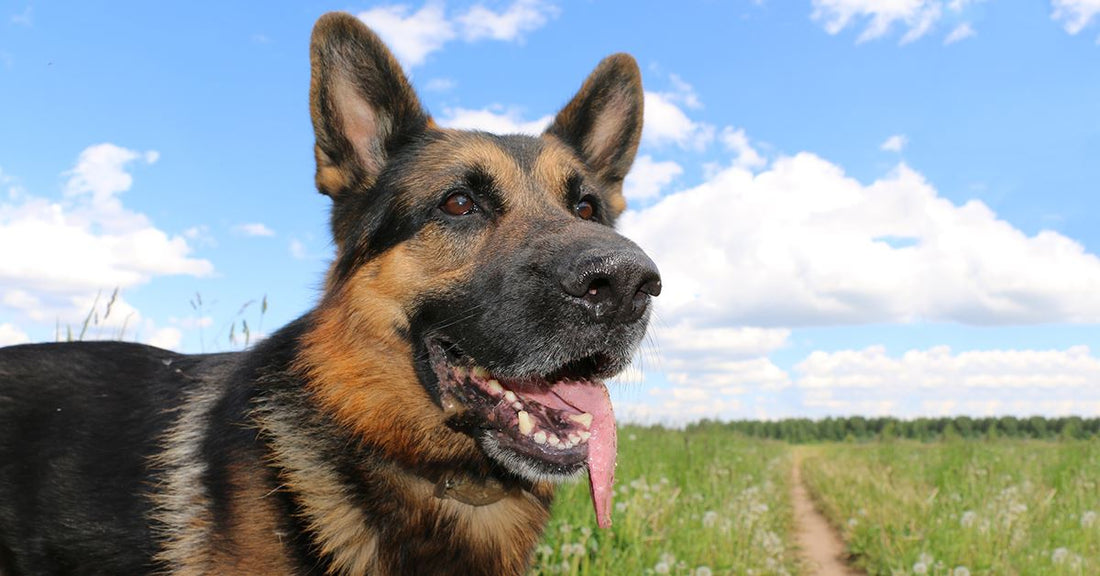What Marker Training Is And Why It Works So Well

Clicker training or marker training is a type of positive reinforcement training that involves using a clicker to train a dog. It’s simple to learn for both dog and handler and is very rewarding for both.
What is Positive Reinforcement Training?
Before we dive deeper into marker training, we’ll first touch on what positive reinforcement is. Positive reinforcement training shapes a dog’s behavior through the use of rewards, such as treats, praise, toys, or anything else the dog loves.
Positive reinforcement is fun for dogs because it gives them what they want, such as yummy treats and praise, in exchange for a desired behavior. Positive reinforcement training is a powerful tool because most dogs are willing to perform and repeat a behavior in exchange for something great.
The key to mastering this type of training is that the dog must learn what it is that they did right to deserve such a great reward. In other words, timing is everything. For example, the dog must understand that they are being rewarded for sitting, not standing back up or laying down after the sit. This is where marker or clicker training comes in handy.
What Is Marker Training?
With marker or clicker training, you’ll use a clicker to ‘mark’ the desired behavior. A clicker is a simple plastic handheld tool that makes a click sound when you press it. There are many different types but they are all small and can be easily carried in the hand or pocket, which makes them very convenient to use.
The clicker is great because it allows you to make the click sound exactly when the dog performs the behavior you ask of them, this is called marking the behavior. The dog is then rewarded with a great treat. Dogs quickly learn to associate the click with receiving a reward. Before long, they’ll connect that the click means that they did what you asked right.
When beginning clicker training, it’s important to keep your clicker hand still, by your side, and the treats out of sight. Since dogs are masters at reading body language, you’ll want to be sure the dog is learning to listen for the click rather than watching you for a signal.
Some common commands to begin practicing marker training with include:
• Sit
• Up
• Down
• Place
• Stay
• Come
• Heel
• Leave it
• Touch
• Off
• Watch me
To start simply issue the command and when the dog follows it, mark the behavior to correspond with the correct action. For instance, if you tell your dog to sit, click when their rear hits the floor and then give a treat (its best to start with treats to get the dog excited about clicker training).
Don’t worry if you time the click wrong. If the dog performed the command, feed the treat so you don’t disappoint the dog or cause them to lose interest. Then repeat the command, mark at the right time, and treat.
It’s best to start clicker training with one simple command, such as sit. Keep practicing that until you feel the dog has connected the click with receiving a treat. Then slowly move on to more easy commands.
Once your dog masters the easy stuff, you can make it more challenging. You can also begin to mark a behavior your dog offers without being given a command and connect a command with it. For example, let’s say your dog backs up, you can mark it, create a command, and treat and soon your dog will learn that command, too.
Why Does Clicker Training Work So Well?
Clicker training works well because dogs quickly learn to connect the click with good things. It helps keep training exciting and fun. Because clicker training is so positive, rather than corrective, it helps keep the dog interested. It also helps strengthen the bond between dog and owner.
Clicker training is also fun and easy to build on. It can be done anywhere. With clicker training, the opportunities are endless. For instance, you can click when your dog stands on the scale at the vet. Or, when they hand over their paws to get their nails trimmed. Or, when they naturally do a particular behavior that you want them to repeat.
We hope you enjoy your clicker training journey. Please pass this article onto your family and friends.
You may also like: How To Train Your Dog With Reward Based Training
























